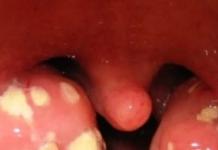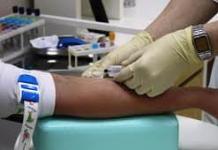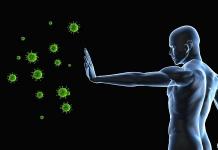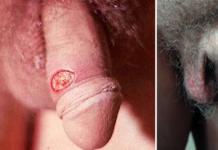Thrush and hormones
“At one time, I recovered with great difficulty from thrush, which I associate with taking hormonal drugs. Recently a doctor recommended that I use hormone replacement therapy. How can I avoid exacerbating an old problem? "
Galina, 45 years old.
The answer is Tatyana Viktorovna Chebotnikova, candidate of medical sciences, gynecologist-endocrinologist of the Federal State Institution "Endocrinological Research Center of Rosmedtechnologies" in the capital.
Unknown reasons
The reasons for the development of thrush are still unknown. There are a number of hypotheses and assumptions, but there are no convincing arguments and evidence in defense of this or that opinion.
However, it has been noticed that most often young women and expectant mothers encounter thrush. Perhaps hormonal changes can cause the growth of fungi of the genus Candida.
Unfortunately, it is extremely difficult to cope with thrush on your own. This disease must be treated, and always under the supervision of a specialist. Self-medication can only bring temporary relief. Meanwhile, the problem will remain unresolved and then remind of itself again. Perhaps this was the case in your case.
Life-saving hormones
Fears about the negative impact of hormone replacement therapy are also groundless. Unlike other hormonal drugs.
Quite the opposite is true. Female hormones have an extremely positive effect on the vaginal microflora.
With age, the amount of estrogen decreases, which leads to a thinning of the inner surface of the vagina and causes a feeling of dryness and discomfort. In addition, women over 50 often complain of thrush. To eliminate all these problems, it is enough to compensate for the deficiency of female sex hormones.
For this purpose, hormone replacement therapy preparations containing natural estrogens are optimally suited. Currently, those are used that are completely identical to those synthesized in a woman's body. Hence the minimum of side effects.
The effect of natural estrogens does not depend on the route of administration of the drugs. They can be used in the form of suppositories and gels, as well as in the form of tablets and patches. The desired effect lasts for the entire duration of the treatment. I know of many cases when women on the background of HRT got rid of their long-standing problems with thrush. So you shouldn't be afraid.
However, all this applies only to hormone replacement therapy. The drugs used for contraception have the exact opposite effect.
In 2-3% of women, with prolonged use of hormonal contraceptives containing synthetic estrogens, the growth of Candida fungi is activated, that is, thrush appears. By the way, women who are too young often have the same trouble.
The fundamental difference between those and other hormonal agents is in their composition.
Since the purpose of taking contraceptives is to suppress ovulation, synthetic estrogens are needed for this. Moreover, in much larger quantities than is usually formed in a woman's body. They, under appropriate circumstances, can provoke thrush.
Hormone replacement therapy uses only low doses of natural estrogens. They allow you to successfully cope with the manifestations of menopause. At the same time, they do not cause a feeling of dryness, discomfort and, which is important, are a kind of guarantee of protection against some urogenital infections.
The only remedy for DAIRY and Candida diseases recommended by our subscribers!
Thrush (candidiasis) is an infectious disease caused by the intensive growth of Candida fungi. These microorganisms inhabit the healthy microflora of the vagina and in a static state do not cause concern. Pathology begins to manifest itself only in the case of rapid and uncontrolled proliferation of fungi. Thrush cannot be called a purely female disease; it can manifest itself in both men and children. Nevertheless, due to the physiological characteristics of the body, it is women who most often suffer from it.
The multiplication of yeast-like fungi can be triggered by many factors. The main cause of candidiasis is called a decrease in immunity. But, as practice shows, the disease can be the result of taking contraceptives.
How contraceptives work
Contraceptives are drugs that are designed to prevent an unplanned pregnancy. The principle of action of protective agents is based on the blockade of ovulation. Under the influence of contraceptives, the egg does not have time to mature and remains in the ovary. And since the sperm is deprived of the object of fertilization, then pregnancy does not occur. Modern contraceptives have virtually no side effects. However, they also have drawbacks. One of the negative consequences of taking hormonal contraceptives can be thrush.
Causes of candidiasis when taking birth control
The composition of combined contraceptives includes the hormones progesterone and estrogen, which affect the amount of their own hormones in the female body. Increased progesterone levels negatively affect immunity. An increase in estrogen leads to the accumulation of glycogen in the vaginal mucosa - an ideal breeding ground for yeast-like microorganisms. There is an imbalance in the biocenosis, which is the cause of bacterial vaginosis. Thus, the more estrogen and progesterone in the body, the more intensively the Candida fungi will grow.
I must say that thrush can appear when taking birth control pills, even with the most minimal amount of hormones. For the reproduction of fungi, a small change in hormonal levels is enough. In addition, some drugs of previous generations negatively affect the immune system and reduce the body's resistance to external factors. Thus, the opinion that thrush can be a consequence of taking hormonal drugs to prevent pregnancy is a real fact, proven in practice.
Common signs of candidiasis when taking hormonal drugs
Vaginal thrush caused by taking contraceptives is indicated by the following symptoms:
- itching of varying intensity (the level of discomfort may depend on a woman's sensitivity to various stimuli);
- burning sensation in the genital area;
- redness of the skin on the genitals;
- clots of white discharge (both with and without an unpleasant odor);
- pain during sexual intercourse;
- discomfort or even pain when urinating.
Symptoms usually worsen a week before menstruation. This is due to a change in the level of the hormone estrogen, which increases the alkaline background of the vagina. Thus, hormonal changes in the female body before menstruation or during menopause, caused by taking contraception, can cause vaginal yeast infection in some patients.

Itching and burning with candidiasis are more pronounced in women who are prone to allergic reactions. Most often, the discomfort intensifies in the evening. An exacerbation can be triggered by being warm (in bed or after taking a bath). In some cases, the discomfort is so severe that it interferes with sleep.
Burning and itching with thrush interferes with a full sex life. Contraceptive vaginal candidiasis has a white, thick discharge. They usually have a curdled or creamy consistency, sometimes with flakes.
Each of these symptoms indicates the onset of thrush. But in some cases, signs of the disease may be absent. The asymptomatic course of the disease does not cancel out its possible negative consequences.
Thrush and protective rings or spirals
Most women who have given birth seek to protect themselves from unwanted pregnancies. One type of protective device is special vaginal rings and spirals. Such contraceptives are very popular among women who have submitted. The massive spread of such remedies against unwanted pregnancy is explained by several factors:
- Rings and spirals take leading positions in reliability (94-97%).
- Contraceptive hormones only affect the reproductive area.
- The tools are easy to use. The vaginal ring is installed once a month, and the spiral is even less often installed once every few years.
But these protective devices also have their drawbacks. For example, vaginal rings can cause candidiasis.

The composition of contraceptives includes the hormones estrogen and progestogen. After placing the ring in the vagina, hormones begin to act on the egg. Ovulation blockade entails changes in the endometrium of the uterus and hormonal imbalance, as a result of which thrush appears. Vaginal rings cause an increase in the viscosity of mucus, which negatively affects the microflora of the vagina. This causes the growth of Candida fungi.
When symptoms first appear, a woman needs immediate treatment. When candidiasis becomes chronic, the vaginal ring should be replaced with another contraceptive medication.
Candidiasis prevention methods
It's no secret that any drug intervention in the body has certain consequences. This statement also applies to contraception. To exclude or at least minimize the appearance of thrush, you need to take a responsible approach to the choice of the drug.

The selection of a contraceptive should only be done by a gynecologist. This requirement is especially important if the lady is already sick with candidiasis, and even more so if the thrush is chronic. Before recommending a specific contraceptive, the doctor will conduct the necessary research and prescribe several tests to assess:
- hormonal background;
- blood clotting data;
- the state of the biochemical parameters of the blood.
This is especially true for women with hypersensitivity to progestogens or estrogens. Obvious signs of such susceptibility are an excess of hair, frequent vomiting and nausea, edema before menstruation, acne, and profuse mucus during ovulation. The choice of hormonal drug depends on the test results.
Before you start taking them, you must study the attached instructions and strictly follow all the doctor's recommendations. Exceeding the dosage inevitably entails a violation of the hormonal background, and hence the appearance of candidiasis.
Contraceptives with minimal hormones are ideal for nulliparous women with regular sex life. Preparations with an increased dosage of the active substance (50-250 mcg) are recommended for women who have already given birth of a late reproductive age.
Treatment
Treatment of thrush developed against the background of the use of hormonal agents is carried out with the same drugs that are used in the treatment of other types of the disease. There are several groups of medicines for candidiasis:
- antifungal local use (ointments, cream, suppositories);
- antifungal of the general type (tablets);
- combined.
For primary infection, topical preparations are used. However, if thrush becomes chronic, then local therapy may be powerless.

There are many medications available today and there are various treatments for candidiasis. However, none of the modern drugs guarantees 100% certainty that thrush caused by taking birth control pills or rings will not recur again. However, with a correct and responsible approach to treatment, the chances of excluding a recurrent disease increase several times.
If it was not possible to avoid the disease, then you should not independently assess the existing symptoms. You must immediately consult a doctor. The first signs of the disease appear at the very beginning of taking hormonal contraceptives. Treatment with traditional drugs will not give the desired effect if you do not urgently replace the contraceptive. In order to avoid increasing negative consequences, it is not recommended to change the contraceptive without consulting a doctor.
The chronic form of the disease can only be avoided if you do not experiment with your health. Do not heal yourself! Only a professional physician will be able to prescribe a full examination and choose the correct treatment regimen.
And a little about secrets ...
Have you ever tried to get rid of thrush? Judging by the fact that you are reading this article, the victory was not on your side. And of course you know not by hearsay what it is:
- white cheesy discharge
- severe burning and itching
- pain when having sex
- bad smell
- discomfort when urinating
Now answer the question: does this suit you? Can thrush be tolerated? And how much money have you already "poured" on ineffective treatment? That's right - it's time to end it! Do you agree? That is why we decided to publish an exclusive of our subscriber, in which she revealed the secret of her getting rid of thrush.
What you need to do in order to forget about candidiasis. And how does the diet affect the normalization of the balance of hormones.
The appearance and subsequent reproduction of candida can cause the most adverse consequences, including disruptions in the work of hormones. The uncontrolled action of this fungus often underlies various painful phenomena, including menopause, PMS, excessive estrogen activity, libido below the prescribed level, dizziness, mood swings, and weight gain.
How to get rid of candidiasis and restore hormones
The excessive presence of this fungus provokes tissue inflammation, which, in turn, leads to further spread of the fungus throughout the body. In the process of metabolism of the fungus in question, about 70 different kinds of toxic substances are released, some of them, by imitating the hormone estrogen, disrupt the existing hormonal balance, which has negative consequences for the body.
How to eradicate fungus
The main way to prevent and eradicate candida, as well as return hormonal balance to normal, without using medications, is a diet that includes two stages:
1) complete elimination of candida from the body;
2) bringing the intestinal microflora to a normal state and its further maintenance at an acceptable level.
First step
Throughout it, a woman takes everything necessary to eliminate candida by cleansing the gastrointestinal tract of the fungus itself, as well as its by-products resulting from decay. As a result, intestinal microflora heals, immunity becomes better. This stage can be carried out using one of two methods, namely:
1. Eating exclusively liquid food (this should be carried out within a period of one to two days).
To do this, you need to cook vegetable broth, which includes:
Onions (one piece);
Garlic (tridalles);
Celery (one sprig);
Kale (one bunch)
These ingredients are calculated for one liter of water. Salt at your own discretion.
Water is poured into a saucepan, after which food is placed there. The vegetables are boiled until they are done. Then the broth is filtered, boiled vegetables are removed from it. The broth is drunk in one day. It is drunk in small sips.
At the same time, during this period, you should drink as much as possible of pure water, which helps to remove toxins accumulated in it from the body.
It's a good idea to do such a diet at least once every 3-4 weeks, or use it as a preparation preceding the second way to get rid of the candida present in the body.
2. Vegetable diet (the use of exclusively fresh and stewed vegetables). Lasts for three to five days.
Due to the fact that there will be no alcohol, sugar and cereals in the diet, getting rid of candida will begin to occur much faster. During this period, it is advisable to eat vegetable salads (from various types of cabbage, asparagus), which are seasoned with squeezed lemon juice or oil (from coconut or olive).
These salads should be eaten alternately with stewed vegetables (they should be lightly stewed).
At the same time, it is necessary to completely abandon those vegetables in which starch is present in large quantities (these include potatoes, carrots, beets). This is because they increase blood sugar, which creates a favorable environment for candida to spread.
And, of course, you should consume as much as possible clean water, which helps to eliminate toxic substances.
Stage 2
After the toxins have been removed (as well as the by-products of the fungus), you should begin to improve the intestinal microflora, doing everything necessary to maintain it at the proper level. Diet is the means that will improve the appetite, eliminate the desire to eat something sweet, and bring the microflora into a normal tone.
The basic principles of such a diet are:
Complete rejection of food containing a large amount of carbohydrates (various kinds of sweets), as well as alcohol and sugar. These products create the basis for candida to spread further throughout the body, and negatively affect the immune system. If the immune system is functional enough, it is independently capable of regulating the growth process of candida.
instead, you should eat potatoes (sweet), carrots, spinach, cabbage (kale), asparagus.
introduce into the daily diet foods with a high content of enzymes (kefir, sauerkraut and some others). They help to bring microflora into proper condition.
You need to be prepared for the fact that this diet completely kills candida fungi, removes numerous toxins from the circulation, in connection with which the following manifestations are characteristic of this period:
Frequent headaches;
Feeling of complete loss of strength;
Dizziness;
Intestinal malfunctions (constipation followed by diarrhea, as well as excessive gas formation);
Excessive sweating;
Intermittent high fever;
Sinusitis;
Signs suggesting a cold;
All kinds of skin allergic manifestations.
All of them, in most cases, last no more than one week. And this means that candida is excreted from the body. In addition, you need to drink as much water as possible, removing the toxins present. To make the process faster, you should go to the bathhouse or sauna. And after two or three weeks, energy will return to you, the body will regain lightness, the head will be light, the mood will be mostly positive. And this is what the proposed diet leads to. published by
If you have any questions - ask them
P.S. And remember, just by changing your consciousness - together we are changing the world! © econet
 It has also been proven that the effect of hormones on immunological reactions depends on their concentration: high levels have an immunosuppressive effect, and low levels have an immunostimulating effect. Thus, the ratio of sex hormones may be one of the explanations for the incidence of candidiasis. Thrush from hormonal pills can be if the drugs contain high doses of estrogen or progesterone. Female hormones can increase the saturation of the vaginal tissue with glycogen, which mushrooms feed on, or decrease immune responses. Therefore, hormonal thrush occurs.
It has also been proven that the effect of hormones on immunological reactions depends on their concentration: high levels have an immunosuppressive effect, and low levels have an immunostimulating effect. Thus, the ratio of sex hormones may be one of the explanations for the incidence of candidiasis. Thrush from hormonal pills can be if the drugs contain high doses of estrogen or progesterone. Female hormones can increase the saturation of the vaginal tissue with glycogen, which mushrooms feed on, or decrease immune responses. Therefore, hormonal thrush occurs.
Thrush often occurs after Duphaston and Utrozhestan... These drugs are prescribed for women with fertility problems to maintain the corpus luteum phase. With insufficient progesterone levels, the fertilized egg cannot attach to the wall of the uterus. After taking one of the drugs, changes occur in the endometrium that help the fertilized egg to properly attach to the endometrium and develop. Progesterone, which is the active substance of drugs, reduces immune responses and prevents the rejection of the ovum. Therefore, from Duphaston and from Utrozhestan, thrush can occur against the background of a decrease in the body's immune responses.
Candidiasis symptoms may appear after using emergency contraceptives. These are drugs with pronounced gestagenic and antiestrogenic characteristics. One of the most popular means of emergency contraception is Postinor. It has a significant effect on hormone levels and has many side effects. Thrush often appears after Postinor due to the high concentration of the hormone. If a woman takes the drug more often than once a month Postinor, thrush can become chronic. According to the WHO, thrush from birth control pills occurs 50% more often than women who do not take them.
In women who use a vaginal ring Novaring, thrush is a frequent companion. The drug contains derivatives of the hormones estrogen and progesterone. The main mechanism of Novaring is the inhibition of the synthesis of active substances in the pituitary gland and the prevention of ovulation. Against the background of an increased content of the hormone estrogen, the accumulation of glycogen in the cells of the vagina increases, which contributes to the growth of candida. After Escapel, thrush can appear due to the high content of hormones with antiestrogenic action, which reduce the body's immune responses.
Genferon refers to immunomodulatory drugs and does not contain hormones. It is actively used for chronic inflammatory and fungal diseases. The drug copes well with dysbiosis, which develops against the background of a long illness or the appointment of high doses of antibiotics. However, the thrush after Genferon sometimes occurs. This can happen with the wrong use of the drug or a deep pathology of the woman's immune status. If, for example, there is a serious violation of immunity, then the drug will not only not help, but will also cause a relapse.
Patients who are treating inflammatory diseases of the urinary tract with Monural may experience candidiasis. The drug inhibits the synthesis of bacteria and belongs to antibiotics. Thrush after Monurala refers to the side effects of the drug, since, acting on a wide range of microorganisms, the drug disrupts the normal biocenosis of the vagina. As a result, yeast grows actively and symptoms of vaginal candidiasis appear.
It is still not known for certain why some women develop thrush, while others do not. However, it has been proven that: .jpg)
The following factors contribute to the development of a yeast infection
- weakening of immunity;
- chronic infections;
- sexually transmitted diseases;
- diabetes;
Factors provoking vaginal candidiasis
There are a number of theories trying to explain the causes of thrush (vaginal candidiasis):
Changes in hormonal balance
Some gynecologists are convinced that the reason why women become more susceptible to thrush during pregnancy, while taking birth control pills, or before menstruation begins is hidden in the change in hormonal balance associated with the above situations. Elevated levels of certain hormones alter the vaginal environment from mildly acidic to highly alkaline, leading to vigorous growth of Candida. Diabetes also contributes to an acidic environment due to high blood sugar levels. The higher levels of progesterone observed during pregnancy and while taking birth control pills "feeds" the yeast, causing their active growth.
Weak immune system
Antibiotics destroy harmful bacteria, but at the same time beneficial organisms die - lactic acid sticks that live in the vagina and intestines and control the growth of yeast fungi. The use of antibiotics by women prone to thrush can be compared to the general firing of prison guards. In the absence of natural "guards" to limit the growth of yeast fungi, they break free. If the immune system is, among other things, weakened by another disease that you are treating with antibiotics, then this leads to an even greater undermining of it, and the likelihood of candidiasis increases sharply. It is believed that they themselves affect the immune system, reducing its ability to fight infection, suppressing and paralyzing.
Allergy
Research has shown that women with recurrent vaginal yeast infections are also prone to seasonal pollen allergies. Some of them were allergic to Candida albicans. In one study, antibodies to spermicides and some other intractable substances were found in vaginal secretions in women who did not respond to conventional treatment.
From this we can conclude that if you have a thrush that does not respond to conventional treatment or gives relapses, despite all efforts, then it is better to contact not only a gynecologist, but also an allergist. If your infection is provoked by an allergy, then it is most likely possible to interrupt its course with the help of antifungal agents, but the disease will quickly return if the allergen remains in the body. Allergic yeast infections sometimes respond better to antihistamines (antiallergic) drugs. And, of course, anything you are allergic to should be avoided.
As a rule, the following factors contribute to the formation of candidiasis:
- The presence of diseases of the endocrine system (hypothyroidism, obesity, diabetes mellitus). For example, with diabetes, in the blood and urine, the sugar level rises, which leads to an increase in sugar in vaginal discharge and, accordingly, a decrease in the acidity of the environment, which in turn favors the development of Candida;
- Metabolic disease;
- Medication factors (taking corticosteroids, cytostatics, antibiotics);
- Physiological conditions of the human body (pregnancy, age);
- The use of hormonal contraceptives;
- Sexually transmitted diseases (viral infections, trichomoniasis, chlamydia, mycoplasmosis, ureaplasmosis, etc.);
- Chronic infectious diseases;
- Chemical or mechanical injury;
- Surgical interventions;
- Geographic factor (in countries with hot climates, the incidence is higher).
- Failure to comply with the rules of hygiene after a bowel movement, from the intestines, the fungus can end up in the vagina and cause vaginal candidiasis.
- Thrush is not a sexually transmitted disease, however, during intercourse, the risk of the disease increases, since the mucous membrane of the vagina is disturbed. In addition, if a man's thrush is asymptomatic and protective means are not used, re-infection occurs, even after successful treatment.
In women, the development of pathology is often due to the use of oral contraceptives. In addition, the female body becomes a favorable environment for the reproduction of opportunistic fungi during hormonal changes - during pregnancy, as well as in the postmenopausal period.
In patients with thrush, as a rule, various diseases that weaken the immune system (gynecological, gastrointestinal tract) are found. Not infrequently, candidiasis appears as a result of hormonal imbalance, since natural human hormones are involved in the control of the number of fungi. For example, birth control pills that contain hormones can interfere with the body's normal hormonal levels and trigger thrush. For this reason, many women fall ill with thrush just before the onset of menstruation or during pregnancy, when the hormonal status of the body changes greatly.
In addition, the development of thrush is associated with a decrease in the protective functions of the body due to a severe and long illness or the use of drugs that suppress the human immune system. Strong broad-spectrum antibiotics kill all bacteria, both harmful and beneficial. Therefore, after long-term antibiotic treatment of bacterial infections in humans, the natural balance between fungi and bacteria is disturbed, which can lead to the development of thrush.



































